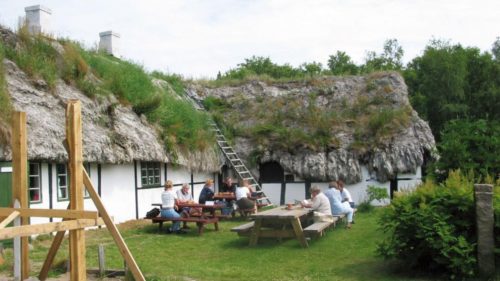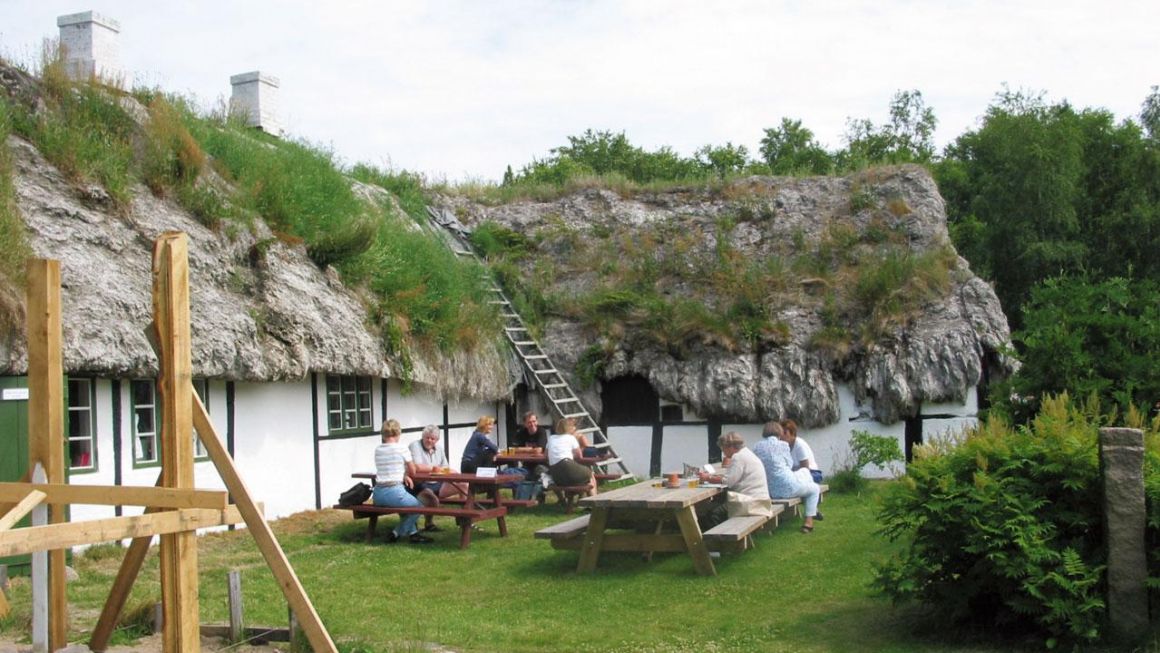
For a long time there were neither straw nor trees on Læsø island. On the other hand there was plenty of eelgrass (a type of seaweed) and driftwood on the beach. The wood was used for timber framing in houses and the eelgrass was used for the roof. Both the seaweed and timber had been impregnated with saltwater, and a seaweed house could therefore stand for several hundred years.
Applying seaweed to a roof
When seaweed was to be applied to a roof in olden times, the process involved a lot of people. The work was led by a seaweed roofing specialist who was assisted by an inserter. A number of girls wrung long drop-shaped bundles of seaweed with a long thin neck, the so-called “washers”. Furthermore, there was a girl who trod the loose seaweed together.
The washers were wound around the lower three battens, and when this formed a thick bank, the loose seaweed was laid on top. When the seaweed had settled a little, it was time for the ridge to be applied. The ridge turfs were cut out at the beach and if everything was well made, the turfs would grow together with the seaweed.
Decline in seaweed houses
At the beginning of the 20th century the majority of roofs on Læsø were covered with seaweed. This isn’t the case today, however. There are in fact only 19 left, 11 of which are listed buildings.
In the 1930s disease attacked the eelgrass, and it therefore became difficult to maintain the roofs. Making new seaweed roofs was out of the question as many loads of seaweed were consumed when constructing just a single roof. It’s estimated that around 540 loads of seaweed were used to make the roof of the museum.
After a storm, an inhabitant of Læsø would crawl up onto his seaweed roof and scan the coast for shipwrecks. The ridge was so wide that he could even take a chair with him up onto the roof. Shipwrecks on Læsø were a lucrative business for the locals in the form of timber and the money they received for salvaging any goods.
The salt content in the eelgrass roof meant that it didn’t burn. Hence the roofs were good for hundreds of years.
